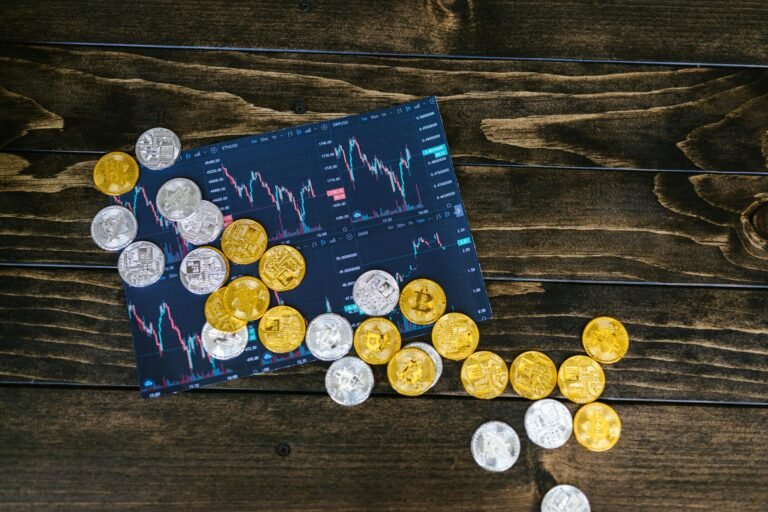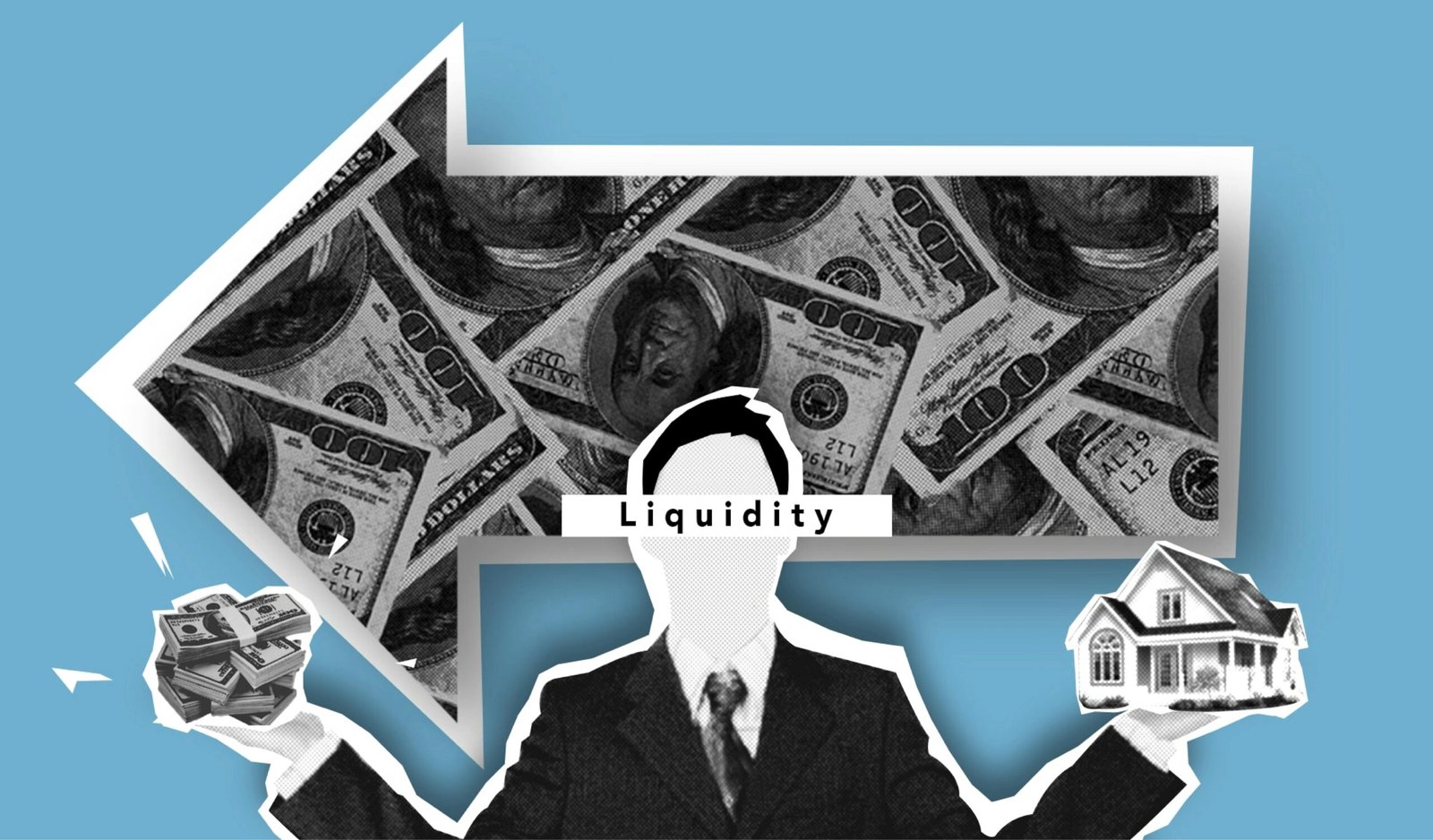
A substantial number of us aspire to acquire a piece of each of the numerous categories of masterpieces. Do you recall the days of your infancy when you attempted to accumulate stamps, coins, or various stones?
Numerous individuals engage in collecting vintage automobiles, watches, or paintings. Therefore, while for some individuals, this hobby provides them with a sense of accomplishment through the acquisition of a diverse array of entities, for many others, it is a form of alternative investment.
Until recently, acquiring a vintage vehicle or a painting was an extremely expensive endeavor. However, technology has made this possible at a reasonable cost.

What is Asset Tokenization?
Asset tokenization enables the acquisition of fractional ownership. This means that the ownership of an asset is divided into smaller, more affordable portions, each represented by a digital token. This allows investors to own a fraction of a high-value asset, such as a painting or a vintage car, without having to buy the entire asset.
Innovation has been observed whenever the cost of a product is reduced and made accessible to the general public.
Consider a situation in which your bank gives you fractional ownership of a highly valued painting after each use of your card, based on your interests and preferences.
In contrast to the current approach, which involves accumulating points and their subsequent redemption for a purchase, asset tokenization empowers you to begin owning a vintage timepiece or any other historical item of your choosing from the very beginning, contingent upon your preferences. This shift in control over your investments can instill a sense of confidence and security in your financial decisions.
You can acquire a portion of a vintage automobile, a historic fort, or the devices featured in your preferred film.
Asset tokenization can be applied to a wide range of assets, including tangible assets like real estate and precious metals, financial instruments like bonds and equities, and intellectual property rights like music and copyrighted works. It’s not limited to these examples, and its potential applications are vast.
Asset tokenization offers significant benefits. For assets that are not currently traded electronically, such as exotic vehicles or artwork, it opens up new markets and trading opportunities. It also enhances the transparency of payment and data flows for assets, thereby increasing their liquidity and trading potential.
The notion of possessing a portion of one’s preferred item is not novel. Currently, it is possible to acquire equity in a company, thereby establishing oneself as a co-owner.
Similarly, some of us may have obtained membership in holiday plans through a hospitality organization. In that hospitality group, you are granted the right to rent an apartment and lodging for specific dates, allowing you to enjoy your vacation fully.
Asset tokenization can be applied to a wide range of assets, both tangible and intangible. For example, you can own a portion of a building, a piece of jewelry, a painting, a piece of software, or a digital image. The possibilities are vast and diverse.
One of the key advantages of asset tokenization is programmability. This means that the tokens representing the assets can be programmed to include a wide range of features and information. For example, a token representing a building can be programmed to automatically distribute rental income to the token holders.
It can help guarantee that tokens are issued or transmitted in accordance with previously established regulations. These regulations may pertain to liquidity, compliance, or any other matter.
The blockchain ledger provides access to rich real-time transaction data, which enables the tokenized asset to be traded securely and effectively around the clock. All pertinent asset data has been encapsulated, ensuring a high level of security and transparency that you can trust in your investment journey.

A Concise History of Asset Tokenization
Asset tokenization originated with the advent of blockchain technology and digital ledgers. In addition to providing a secure and visible method of tracking ownership, this state-of-the-art ledger technology also made tokenization feasible.
The initial significant milestone was the launch of OpenSea, a platform that facilitates the creation and trading of non-fungible tokens (NFTs). Consequently, asset tokenization acquired momentum and was initially proposed for various distinctive assets.
Harbor, Alchemy Insights, and Securitize have since joined the movement, accelerating the adoption and growth of asset tokenization in various industries. The potential for growth and innovation is immense. The global market for tokenized assets is expected to reach $24 trillion by 2027, opening up a world of exciting and promising investment opportunities.
The Mechanism of Asset Tokenization
We will examine the process of Asset Tokenization in detail.
- The Asset: Consider that captivating work of art that you have always admired. It may be the most distinctive vintage vehicle you have ever coveted. This tangible or digital asset serves as the foundation of the tokenization universe. The genuineness and significance of each component are meticulously documented to guarantee that they are accurately conveyed.
These assets may encompass tangible items such as real estate or artwork, monetary items like securities or bonds, intangible items like intellectual property, and even identity and data.
- Tokenization: The magic occurs during the conversion of the human asset into its digital counterpart. The ownership is divided into smaller portions using secure techniques, each represented by a distinct token. Consider these as digital keys that grant you access to the asset of which you possess a portion.
- Distribution: Investors are granted access to these credentials, which are prepared for distribution. This has enabled anyone to acquire a portion of an item previously unattainable or susceptible to error. The possibilities are now boundless. A global community of collectors can develop a masterpiece, and art enthusiasts worldwide can own a premium automobile, irrespective of their financial circumstances.
- Trading: The most thrilling aspect will be exchanging your tokens. Reduce the time spent waiting for transactions to resolve by several days. Tokenization enables the continuous trading of your digital keys on global markets, providing unparalleled flexibility in managing, purchasing, and selling your investments.
Asset tokenization, by increasing liquidity, allows assets to be sold more frequently, maximizing their potential value. This dynamic environment can lead to more efficient and profitable trading opportunities.
Despite its apparent simplicity, this four-step process has the potential to significantly impact the way we own and utilize assets. By democratizing access, it promotes a more equitable and efficient financial system.

The Technology Underlying Asset Tokenization
- Blockchain is an essential component of asset tokenization. In addition to Blockchain, a comprehensive ecosystem of auxiliary technologies is necessary for it to operate seamlessly and realize its full potential.
- Intelligent contracts are a critical component of asset tokenization. These automated contracts necessitate no human involvement, as they establish duties according to predetermined criteria. Consider a token for real estate that utilizes intelligent contracts to automatically deposit rent for investors each month or a token for art that pays the creator royalties upon resale.
Alternatively, contemplate the historically significant objects that a community that employs this technology possesses, such as an antique vehicle or fort. A film producer will pay substantially to rent these properties for his historical drama in this town—a mutually beneficial outcome for all stakeholders.
Blockchain, Smart contracts, and provenance facilitate the establishment of tokenized asset ownership.
- Oracles: By connecting the digital and human realms, oracles offer the real-world data that smart contracts require to operate efficiently. Oracles guarantee the availability of precise and dependable information to initiate the necessary events, whether to monitor the temperature in a warehouse that contains tokenized goods or to confirm the authenticity of a tangible work of art represented by tokens.
- DEXs (Decentralized Exchanges): An intermediary is not required when utilizing decentralized or DEXs.
DEXs eliminate the necessity for traditional exchanges and the accompanying fees by enabling users to trade tokenized assets directly. Peer-to-peer trading provides investors with increased freedom, control, and transparency while providing a secure and safe environment for change. Comprehending the interaction between Blockchain and various auxiliary technologies can facilitate a more comprehensive comprehension of asset tokenization.

Critical Characteristics of Asset Tokenization
- Fractional Ownership: The desire to possess a portion of the moon or an interest in a manuscript awarded the Nobel Prize. This potential is unlocked by asset tokenization, which divides ownership into minute pieces, making even the most valuable assets accessible to all.
As a result, previously exclusive markets are now accessible to all, thereby democratizing investment opportunities and eliminating conventional entry barriers. This provides a wider spectrum of individuals with exciting opportunities, irrespective of their financial status.
- Global Reach: Asset tokenization eliminates conventional geographic limitations. Many intriguing and thrilling investment opportunities are available, as one can trade and engage in assets from any location on a global scale.
The cross-border linkage of investors and assets in this global economy fosters innovation, liquidity, and accessibility.
- Security Enhancement: Security cannot be overstated in the contemporary era. Blockchain technology facilitates asset tokenization, establishes an immutable ownership record, and reduces the likelihood of fraud and error.
The encryption and transaction verification processes guarantee the integrity and security of your investments.
- Enhanced Transparency: The era of opaque financial transactions is closing. Every phase of the process—from the issuance of individual tokens to the trading of those tokens—is recorded on the Blockchain through asset tokenization. This inadvertently incorporates transparency by incorporating all available information regarding the original proprietor and the history of each transaction.
This unparalleled transparency provides investors with comprehensive information regarding their assets’ ownership and history, promoting accountability and confidence.
- Reduced Costs: Conventional asset ownership frequently involves intricate procedures and substantial fees. Asset tokenization simplifies these processes by eliminating redundant intermediaries and substantially decreasing transaction costs.
Investment is now more accessible to individuals and organizations due to its affordability, which enables substantial cost reductions. When these fundamental elements are combined, a potent and innovative ownership approach is achieved.
Asset tokenization aims to enhance the efficiency and transparency of the financial system’s technology components, increase accessibility, and encourage global participation.
- Unlocking Illiquid Assets: Tokenization enhances the accessibility and portability of typically illiquid assets, such as real estate and artwork.
- Enhanced Efficiency: Tokenized assets require less administrative effort to manage and trade and are less expensive.
- Innovation Promotion: Tokenization fosters the creation of new financial services and products, thereby improving the investment environment.

The Function of Financial Institutions in Asset Tokenization:
Numerous real-world applications exist for asset tokenization. This application can be enabled or offered by banks to assist their consumers.
- Possess a Piece of History: Visualize yourself holding a fragment of the moon, a rare historical document, or the first edition of your most cherished book. Asset tokenization, which allows these scarce assets to be owned, makes them available to individuals with limited financial resources.
Imagine the possibility of owning a portion of the Mona Lisa or contributing to a book that wins the Nobel Prize—achievements that were previously inconceivable but are now a reality.
- Tokens for real estate: Acquiring real estate has consistently necessitated a substantial financial investment. Asset tokenization eliminates these obstacles, thereby enabling fractional property investments.
This provides individuals with limited resources with access to a profitable market. Consider investing in a luxury apartment building or commercial property, allowing you to diversify your portfolio and generate passive income without needing substantial obligations.
- Making money for your passion: Are you interested in investing in an innovative venture but need more funds? Through asset tokenization, you can make direct contributions to the causes that are significant to you.
You can contribute to the development and profitability of tokenized deals by investing in them when they take off. As an early investor in the next great software company or a game-changing green energy initiative, you could achieve wealth and make a meaningful impact. Regardless of your interests—e.g., real estate, history, or innovation—this technology enables you to capitalize on extraordinary opportunities that were previously unattainable.
- Asset Tokenization has made it simple and affordable to acquire a portion of a royal watch, yacht, or building on a renowned street. This is a result of investment in new asset classes.
Banks may safeguard digital assets. These digital assets, with asset tokenization, can be offered as an alternative investment.
Platforms for Asset Tokenization
1.OpenSea is a pioneer in developing and trading NFTs, which has facilitated the tokenization of assets in various sectors.
- Harbor: Emphasizes the tokenization of real estate assets to broaden the availability of fractional ownership to a broader demographic.
- Securitize offers a comprehensive selection of tokenization solutions for assets in various sectors, including securities, fine art, and collectibles.
- Alchemy provides investors valuable information by providing data-driven insights and analytics for tokenized assets.
- Polymath: This platform enables issuers to generate and supervise tokenized securities.
In addition to these entities, Swarm Fund, FundRequest, Verta, Polypin, Bitbond, and Tokensoft are also significant participants in this context.

Asset Tokenization Examples by Financial Institutions
- In 2021, the Hong Kong Monetary Authority (HKMA) and the BIS (Bank for International Settlements) Innovation Hub’s Hong Kong center conducted a test to issue tokenized green bonds, known as Project Genesis and Project Evergreen.
Subsequently, in 2022, the HKMA implemented Project Evergreen. This evaluated the feasibility of integrating distributed ledger technology (DLT) throughout the bond lifecycle, encompassing primary issuance and settlement, coupon payment, and secondary trading settlement in Hong Kong’s financial infrastructure, legal framework, and regulatory environment.
- Project Guardian is a joint initiative of the Monetary Authority of Singapore and the financial sector designed to evaluate the feasibility of asset tokenization and decentralized finance (DeFi) applications.
- UBS has implemented Ethereum trials for a tokenized money market fund.
- JP Morgan: In 2020, Onyx by JP MORGAN introduced the first bank-led blockchain platform specifically designed to simplify the transmission of digital assets, information, and value.
Investors can pledge assets as collateral through the Tokenized Collateral Network (TCN) application.
- SC Ventures of Standard Chartered has introduced the Libeara tokenization platform.
- Under the Citi Token Services initiative, Citigroup has initiated the tokenization of consumer deposits.
- Expobank has launched the nation’s inaugural tokenized diamond offering. Expobank has democratized access to gemstone investments for small investors in this way.
- HSBC entered the digital asset market with the introduction of its gold tokenization platform. This action is in accordance with the bank’s comprehensive strategy for embracing blockchain technology and addressing the increasing demand for tokenized assets.
HSBC’s gold tokenization platform, built on distributed ledger technology (DLT), provides clients with tokenized ownership of physical gold securely stored in the bank’s vaults. The platform enhances transparency and simplifies the trading process by digitally representing clients’ physical gold holdings with their consent.

In summary,
Asset tokenization is not solely a technological advancement; it is a revolution in asset storage and management. It has the potential to democratize access, generate new financial opportunities, and improve security and transparency.
The expansion of technology and its increasing utilization may result in a greater degree of disruption and innovation across various sectors.
Financial institutions can play a substantial role by serving as custodians of these digital assets and investing in them.

